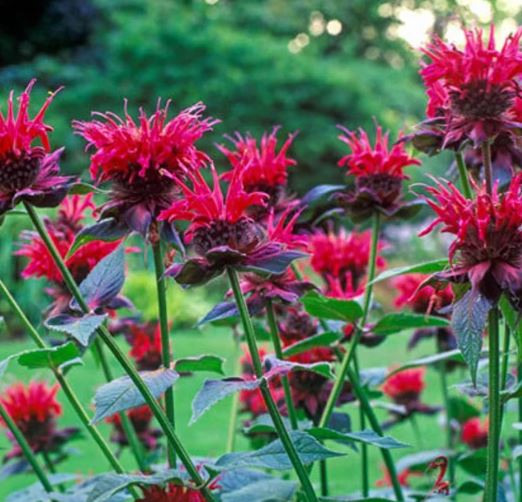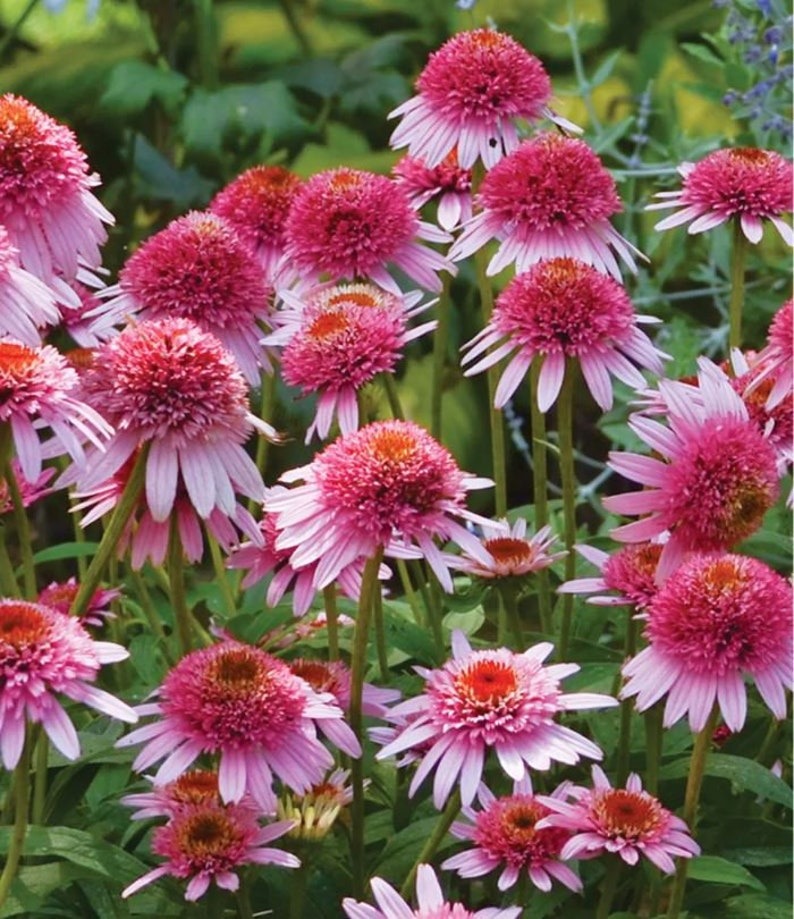Introduction
Raspberry Wine Bee Balm is a type of perennial flowering plant that belongs to the mint family, Lamiaceae. It is native to North America and is commonly found in the wild, as well as cultivated in gardens for its ornamental beauty and medicinal properties.
Medical Properties
Propagation
Garden Companions
Raspberry Wine Bee Balm is not just a beautiful addition to your garden; it also acts as a natural companion plant. Its aromatic foliage helps deter pests like aphids, making it an excellent companion for vegetables such as tomatoes and peppers. Additionally, the vibrant flowers attract pollinators, which can improve the overall health and productivity of your garden.
Care Guide
1. Choosing the Right Location:
- Plant bee balm in a location that receives full to partial sunlight. They prefer about 6 hours of sunlight per day.
- Ensure the soil is well-draining and moderately fertile.
2. Planting:
- Plant bee balm in the spring or fall, spacing them about 18 to 24 inches apart.
- Dig a hole slightly larger than the plant’s root ball. Place the plant in the hole and backfill with soil.
3. Watering:
- Keep the soil consistently moist, especially during the plant’s growing season.
- Water at the base of the plant to avoid wetting the leaves, which can lead to disease.
4. Mulching:
- Apply a layer of organic mulch around the base of the plants to retain soil moisture, suppress weeds, and moderate soil temperature.
5. Fertilizing:
- In early spring, apply a balanced, slow-release fertilizer according to the manufacturer’s instructions.
- Avoid over-fertilizing, as excessive nitrogen can lead to lush foliage but fewer flowers.
6. Pruning:
- Regularly deadhead (remove spent flowers) to encourage continuous blooming.
- Cut back the plant’s stems by about one-third in late summer to promote bushier growth and more flowers.
7. Disease and Pest Management:
- Monitor your plants for signs of common diseases such as powdery mildew. If you notice any issues, promptly remove affected plant parts and consider using appropriate fungicides.
- Inspect your plants regularly for pests such as aphids, spider mites, and whiteflies. If needed, use insecticidal soap or neem oil to control infestations.
8. Staking and Support:
- Some taller bee balm varieties may benefit from staking to prevent them from flopping over.
- Insert stakes into the ground near the plant and gently tie the stems to the stakes using soft twine.
9. Winter Care:
- Bee balm is generally hardy, but you can provide some winter protection by applying a layer of mulch around the base of the plants.
- In colder regions, cutting back the stems to a few inches above the ground after the first hard frost can help protect the plant during winter.
10. Division:
- Every few years, consider dividing overcrowded bee balm plants to maintain their vigor and health.
- Dig up the plant in the early spring or fall, separate the clumps, and replant the divisions.





